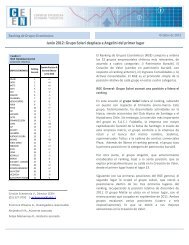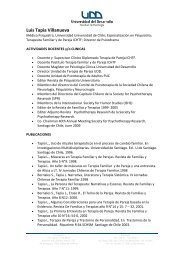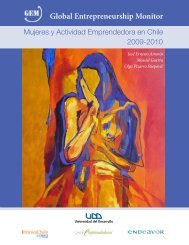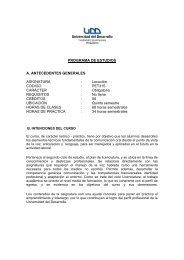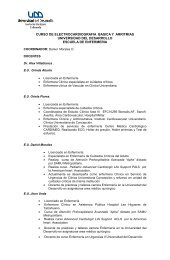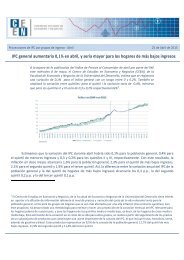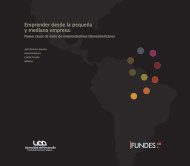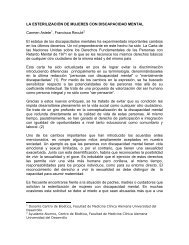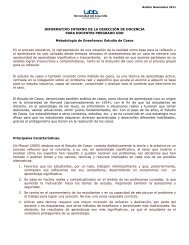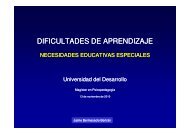Checklist Content on a Standardized Patient Assessment ... - Springer
Checklist Content on a Standardized Patient Assessment ... - Springer
Checklist Content on a Standardized Patient Assessment ... - Springer
Create successful ePaper yourself
Turn your PDF publications into a flip-book with our unique Google optimized e-Paper software.
62<br />
JOHN R. BOULET ET AL.<br />
<strong>Assessment</strong> data<br />
For this study, we selected 11 out of the over 200 CSA cases developed by the<br />
TDC. From a c<strong>on</strong>tent perspective, these 11 study cases were purposely<br />
chosen to model a typical CSA test form. In additi<strong>on</strong>, to help ensure the<br />
generalizability of our findings, we <strong>on</strong>ly picked cases with sufficiently large<br />
numbers of candidate scores (n > 2000 per case). Typically, an examinee<br />
would need to interview and evaluate 11 standardized patients as part of an<br />
assessment. Therefore, even though examinees were differentially exposed to<br />
the cases in this study, the 11 modeled encounters could be c<strong>on</strong>ceived of as a<br />
hypothetical test form.<br />
Panelists<br />
We recruited five staff physicians to provide the initial study data. Three are<br />
specialists in emergency medicine, two are trained in internal medicine, <strong>on</strong>e<br />
with a subspecialty of nephrology, and <strong>on</strong>e with a subspecialty of infectious<br />
diseases. All of the staff physicians had been involved in the development and<br />
validati<strong>on</strong> of high-stakes clinical skills assessments, including the ECFMG<br />
CSA and the USMLE Step 2 CS.<br />
Instructi<strong>on</strong>s<br />
The physician panelists were told to read through the descriptive materials<br />
for each of the 11 cases. They were then instructed to indicate the clinical<br />
appropriateness of each checklist item. Three levels were provided: ‘‘indicated<br />
and essential’’ (coded 1), ‘‘indicated but not essential’’ (coded 2), and<br />
‘‘neither indicated nor c<strong>on</strong>traindicated’’ (coded 3). For the purpose of this<br />
study, ‘‘indicated’’ denoted items that, given the patient complaint, would be<br />
used by a physician/medical student as part of the hypothesis testing paradigm<br />
needed to generate a reas<strong>on</strong>able diagnosis. Essential items were those<br />
that were c<strong>on</strong>sidered indicated, but also judged to be absolutely necessary for<br />
patient care.<br />
Analysis<br />
Rater agreement<br />
Given that the CSA was developed to measure skills required at entry to<br />
graduate medical educati<strong>on</strong>, we felt that the most important delineati<strong>on</strong> for a<br />
checklist item was that it was c<strong>on</strong>sidered ‘‘indicated’’ by the physician<br />
panelists. For a resident just beginning graduate training, asking history taking<br />
questi<strong>on</strong>s and performing physical exam maneuvers that are indicated, some<br />
of which may not be essential, would be expected. Therefore, the ‘‘indicated<br />
and essential’’ and ‘‘indicated but not essential’’ categories (1 and 2) were



